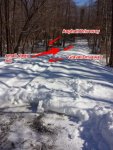Hi All, I'm still deciding on which tractor im going to get but I'm leaning towards a B series. Although I would love a BX due to low center of gravity, I have alot of lumps, bumps, and onsticles on my wooded property. So I don't want anything to get caught... and I have no grass to cut.
One of my concerns is that I have a fairly steep incline on my driveway that is about 20 degrees from level. Of course rolling back is my major concern but I'm probably over thinking it as I never had a problem with my riding mower. Although it had me thinking, what is the front to rear weight distribution? Although I am planning to buy weights, if I'm clearing snow I would think I would not want to add rear weights as I'm driving up the hill to ensure my front is loaded (assuming FEL).
If I knew the front and rear weight distribution, it would let me know how much more is being added to the downward force. I didn't find this answer just yet in the forums.
One of my concerns is that I have a fairly steep incline on my driveway that is about 20 degrees from level. Of course rolling back is my major concern but I'm probably over thinking it as I never had a problem with my riding mower. Although it had me thinking, what is the front to rear weight distribution? Although I am planning to buy weights, if I'm clearing snow I would think I would not want to add rear weights as I'm driving up the hill to ensure my front is loaded (assuming FEL).
If I knew the front and rear weight distribution, it would let me know how much more is being added to the downward force. I didn't find this answer just yet in the forums.


